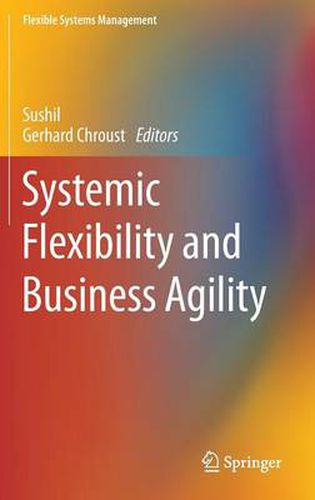Readings Newsletter
Become a Readings Member to make your shopping experience even easier.
Sign in or sign up for free!
You’re not far away from qualifying for FREE standard shipping within Australia
You’ve qualified for FREE standard shipping within Australia
The cart is loading…






This title is printed to order. This book may have been self-published. If so, we cannot guarantee the quality of the content. In the main most books will have gone through the editing process however some may not. We therefore suggest that you be aware of this before ordering this book. If in doubt check either the author or publisher’s details as we are unable to accept any returns unless they are faulty. Please contact us if you have any questions.
This book provides a conceptual framework for systemic flexibility and business agility, drawing on a basis of research/case applications in various types of flexibility and agility in business. The selected papers address a variety of issues concerning the theme of systemic flexibility and business agility and are organized into following five parts: (i) Systemic and Strategic Flexibility; (ii) Information and Business Agility; (iii) Flexibility, Innovation and Business Excellence; (iv) Flexibility in Value and Supply Chains; and(v) Financial Flexibility and Mergers & Acquisitions.
Flexibility and agility in business are emerging as key dimensions of business excellence that encompass the requirements of both choice and speed. The two concepts, flexibility and agility, have been used in multiple ways and often interchangeably, both in literature and in practice. The growing need for flexibility/agility in business can be seen from reactive as well as proactive perspectives. A business enterprise is expected to possess reactive flexibility/ agility (as adaptability and responsiveness) in order to cope with the changing and uncertain business environment. It may also endeavor to intentionally generate flexibility/agility as a strategic change in a variety of ways, such as leadership change, reengineering, innovation in products and processes, use of information and communication technology, and learning orientation.
$9.00 standard shipping within Australia
FREE standard shipping within Australia for orders over $100.00
Express & International shipping calculated at checkout
This title is printed to order. This book may have been self-published. If so, we cannot guarantee the quality of the content. In the main most books will have gone through the editing process however some may not. We therefore suggest that you be aware of this before ordering this book. If in doubt check either the author or publisher’s details as we are unable to accept any returns unless they are faulty. Please contact us if you have any questions.
This book provides a conceptual framework for systemic flexibility and business agility, drawing on a basis of research/case applications in various types of flexibility and agility in business. The selected papers address a variety of issues concerning the theme of systemic flexibility and business agility and are organized into following five parts: (i) Systemic and Strategic Flexibility; (ii) Information and Business Agility; (iii) Flexibility, Innovation and Business Excellence; (iv) Flexibility in Value and Supply Chains; and(v) Financial Flexibility and Mergers & Acquisitions.
Flexibility and agility in business are emerging as key dimensions of business excellence that encompass the requirements of both choice and speed. The two concepts, flexibility and agility, have been used in multiple ways and often interchangeably, both in literature and in practice. The growing need for flexibility/agility in business can be seen from reactive as well as proactive perspectives. A business enterprise is expected to possess reactive flexibility/ agility (as adaptability and responsiveness) in order to cope with the changing and uncertain business environment. It may also endeavor to intentionally generate flexibility/agility as a strategic change in a variety of ways, such as leadership change, reengineering, innovation in products and processes, use of information and communication technology, and learning orientation.